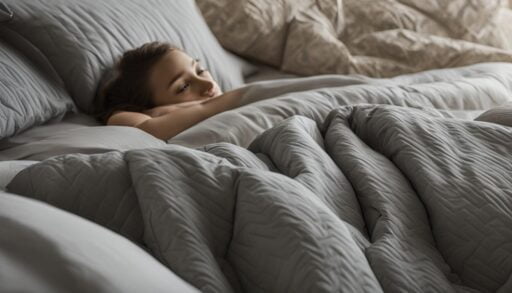Bedding allergies symptoms: 21 proven fixes for better sleep
Discover how bedding allergies symptoms like itchy eyes, sneezing, and coughing may actually be caused by what’s hiding in your bedding—and learn effective ways to restore healthy, uninterrupted sleep. For a deeper dive into allergen-safe setups, see our hypoallergenic mattress and pillow guide.
Key Takeaways
- Bedding allergies symptoms—congestion, itchy eyes, cough, skin irritation—often peak in the morning.
- Dust mites, mold, pet dander, and pollen trapped in bedding are common triggers.
- Weekly hot washing (≥130 °F), allergen-proof covers, dehumidifiers, and hard flooring help reduce allergens.
- Materials matter: tightly-woven, hypoallergenic fabrics and foam mattresses resist allergens better.
- When symptoms persist, allergy testing and targeted treatments like immunotherapy may be needed.

1. What Are Bedding Allergies Symptoms?
Bedding allergies can feel like a cold, but they linger and often worsen at night. Common signs include:
- Nasal congestion, runny nose, sneezing
- Itchy, red, or watery eyes
- Itchy throat, post-nasal drip, coughing
- Wheezing or asthma-like symptoms (chest tightness, difficulty breathing)
- Itchy skin, eczema flare-ups
- Facial pressure or sinus pain
- Fatigue and disrupted sleep
Explore everyday maintenance tips in our mattress hygiene and cleaning guide.
2. What’s Causing the Symptoms?
• Dust mites
Microscopic arachnids feeding on dead skin, dust mites thrive in warm, humid bedding. Their droppings and body fragments trigger allergic reactions. Learn more from the Sleep Foundation’s dust mite allergy guide.
• Mold and mildew
Moist conditions encourage mold growth—especially in damp climates or homes—leading to sneezing, coughing, itchy eyes, and even skin rashes. See household prevention tips from The Spruce on reducing indoor humidity.
• Pet dander and pollen
Pets on the bed and open windows during pollen season introduce fur, dander, and pollen particles into bedding. Practical cleaning ideas from Apartment Therapy’s allergen-reducing cleaning tips can help.

3. How to Identify Bedding Allergies Versus a Cold
- Symptoms worse in bed and first thing in the morning
- Relief when away from home
- No fever (just allergy symptoms)
- Lasting beyond 10 days, unlike most colds
If unsure, allergy testing can help confirm the cause. Get an overview of options in Eachnight’s guide to bedroom allergies.
4. Home Remedies to Reduce Bedding Allergens 🛏️
Wash bedding weekly in hot water (130 °F / 54 °C)
Hot washing kills dust mites and loosens allergens for removal. Don’t forget pajamas, cushion covers, stuffed animals, and pet bedding too! Learn more about mattress hygiene and cleaning. For a temperature refresher, see The Spruce on washing sheets properly.
Use allergen-proof covers
Zippered encasements for pillows, mattresses, and duvets block dust mite entry and escape—acting as a “filter.” Our picks live in the hypoallergenic mattresses for allergy sufferers guide.
Vacuum regularly with HEPA filters
Cleaning floors and mattress surfaces weekly removes dust mite particles and other allergens.
Air out your bed
Make your bed at least 30 minutes after rising to reduce humidity that attracts mites.
Lower humidity & remove carpets
Maintain indoor humidity below 50%. Swap carpet for wood or tile—dust mites dislike dry, non-fabric surfaces. Practical pointers: Apartment Therapy’s dehumidifier tips.
Pet and pollen precautions
Keep pets off the bed. Dry laundry indoors or early before pollen peaks.
Mold prevention
Use a dehumidifier in damp rooms; address spills immediately and avoid drying clothes in bedrooms.
5. Choosing the Right Bedding Materials
- Memory foam & latex mattresses: Dense structure discourages mites. See more in our guide to bedding materials and benefits.
- Microfiber or bamboo sheets: Tight weave limits allergen penetration.
- Hypoallergenic pillows: Down alternatives or foam pillows are less friendly to mites. For more context, visit Sleep Foundation’s hypoallergenic pillow roundup.

6. When Cleaning Is Not Enough: Medical Help
- OTC medication: Antihistamines, nasal corticosteroids, decongestants. See Sleep Foundation’s allergy and sleep overview.
- Saltwater rinses and nasal sprays: Soothe throat and nasal passages.
- Allergen immunotherapy: Allergy shots or sublingual tablets for long-term relief.
- Consult your allergist for diagnosis and treatment tailored to you.
7. When to Replace Your Bedding
- Pillows: Replace every 1–2 years
- Mattresses: Every 7–10 years. Choose the right fit using our complete guide to bed sizes.
- Visibly stained or moldy items: Replace immediately
8. Sample Day-to-Night Allergy-Proof Routine
- Morning: Leave bed unmade for 30 minutes to air out.
- Daytime: Wash bedding weekly in hot cycle; dry thoroughly.
- Evening: Vacuum bedroom, change outfits after outdoor exposure. Learn how bedtime psychology affects your nightly habits.
- Night: Use hypoallergenic pillow and mattress covers; shower to rinse off pollen or dander.
FAQ
- Can bedding allergies cause asthma?
- Yes—dust mite allergens can trigger asthma symptoms like wheezing, chest tightness, and coughing during sleep. Sleep disorders are also linked to poor bedding environments.
- Is washing in cold water enough?
- No—only hot water (≥130 °F) effectively kills mites and removes allergens.
- Will allergen covers make me too hot?
- Choose breathable, lightweight covers with tight pore size (≤6 µm) to block mites without overheating.
- How do I know if it’s bedding allergies?
- If symptoms worsen in bed/morning and improve away from home, it’s likely bedding-related. Allergy testing provides confirmation.
Managing bedding allergies symptoms is all about creating a clean, dry, and protected sleep environment. With regular cleaning, smart fabric choices, and targeted treatments, you can wake up refreshed and ready for the day.
Related reading from Cozy Bed Quarters
- Mattress Hygiene & Cleaning: The Complete Guide
- Hypoallergenic Mattresses: Top Picks for Allergy Sufferers
- Bedding Materials and Benefits: What to Choose (and Why)
Other reading we found popular
- Dust mite allergy: causes, symptoms, and reduction tips (Sleep Foundation)
- How to wash your bed sheets the right way (The Spruce)
- 21 tips to create an allergy-free bedroom (Ethical Bedding)
- Smart dehumidifier tips for a healthier home (Apartment Therapy)























